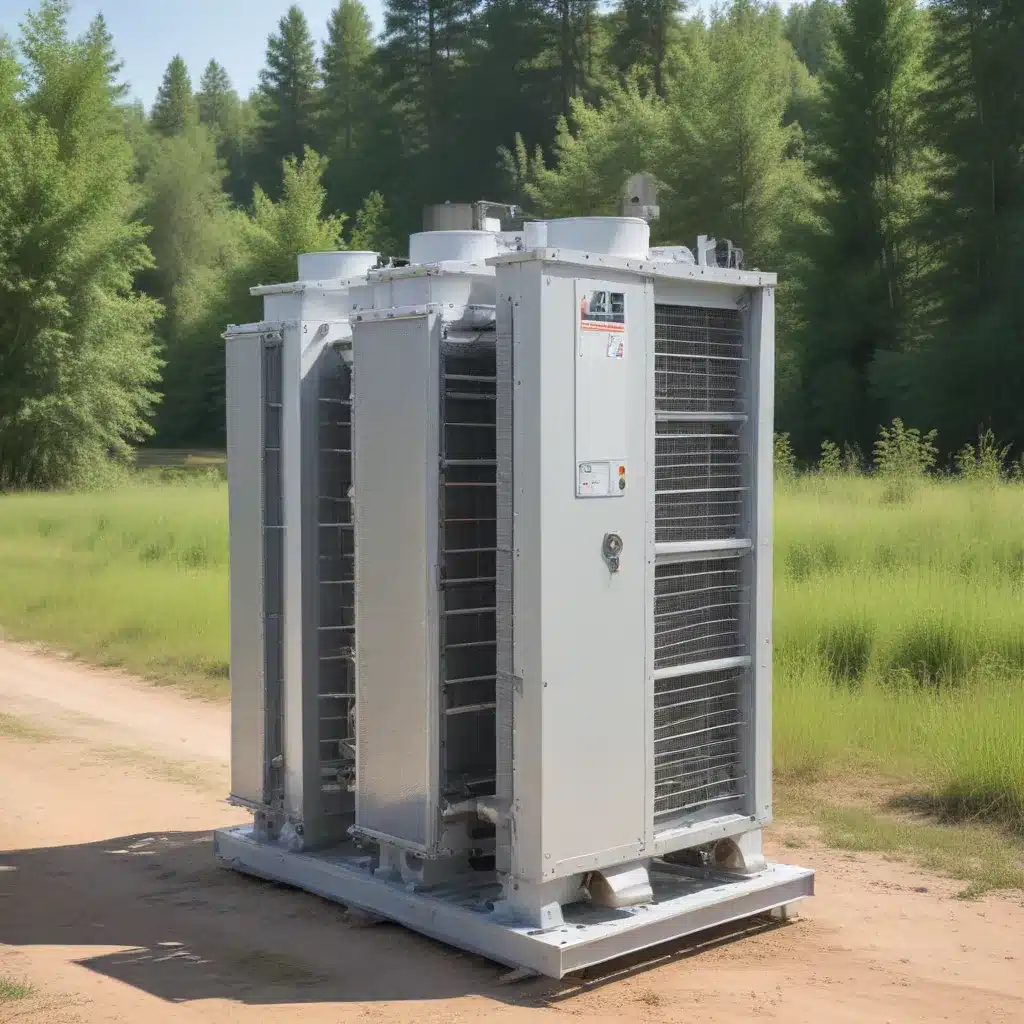
The Importance of Efficient Air-Cooled Heat Exchangers
Air-cooled heat exchangers play a crucial role in various industries, from HVAC systems and refrigeration to power generation and chemical processing. In remote and rural areas, where access to resources and infrastructure can be limited, optimizing the design and performance of these heat exchangers is paramount. Enhancing their efficiency not only reduces energy consumption and operating costs but also minimizes the environmental impact, making them a more sustainable solution for these underserved communities.
Understanding the Principles of Air-Cooled Heat Exchangers
At their core, air-cooled heat exchangers transfer thermal energy between a process fluid and the surrounding air. This process relies on the principles of convection, where heat is transferred from the hotter fluid to the cooler air, or vice versa, depending on the application. The efficiency of this heat transfer is influenced by factors such as the design of the heat exchanger, the air flow patterns, and the temperature difference between the fluid and the air.
Challenges in Remote and Rural Settings
In remote and rural areas, air-cooled heat exchangers face unique challenges that can impact their performance and longevity. Factors such as limited access to skilled maintenance personnel, extreme weather conditions, and the need for robust and low-maintenance designs become critical considerations. Addressing these challenges through innovative design solutions can lead to significant improvements in the overall efficiency and sustainability of these critical systems.
Optimizing Air-Cooled Heat Exchanger Design
To enhance the performance and reduce the environmental impact of air-cooled heat exchangers in remote and rural areas, several key design considerations must be addressed.
Enhancing Heat Transfer Efficiency
One of the primary goals in optimizing air-cooled heat exchanger design is to improve the overall heat transfer efficiency. This can be achieved through various strategies, including:
- Innovative Fin Designs: Exploring advanced fin geometries and surface enhancements, such as wavy, louvered, or finned-tube configurations, can significantly increase the heat transfer surface area and improve air-side convection.
- Optimized Air Flow Patterns: Carefully designing the air flow paths and incorporating features like baffles or flow guides can ensure uniform air distribution across the heat exchanger, minimizing stagnant zones and improving heat transfer.
- Advanced Materials and Coatings: Utilizing materials with high thermal conductivity, such as copper or aluminum, and incorporating protective coatings can enhance the overall heat transfer capabilities while maintaining corrosion resistance.
Reducing Energy Consumption and Emissions
Improving the energy efficiency of air-cooled heat exchangers is crucial in remote and rural areas, where access to reliable and affordable energy sources may be limited. Strategies to achieve this include:
- Optimized Fan Design: Implementing high-efficiency fan designs, such as variable-speed or multi-speed fans, can significantly reduce the power consumption of the heat exchanger while maintaining the desired air flow.
- Intelligent Control Systems: Integrating advanced control algorithms and sensors can enable dynamic optimization of the heat exchanger’s operation, adjusting fan speed and other parameters to match the changing heat load and ambient conditions, thereby improving overall energy efficiency.
- Renewable Energy Integration: Exploring the integration of renewable energy sources, such as solar or wind power, can provide a sustainable and self-sufficient solution for powering air-cooled heat exchangers in remote locations, further reducing the environmental impact.
Enhancing Durability and Reliability
In remote and rural areas, where access to maintenance and repair services may be limited, the durability and reliability of air-cooled heat exchangers become critical factors. Strategies to address these challenges include:
- Robust Design and Materials: Utilizing materials and construction methods that can withstand harsh environmental conditions, such as extreme temperatures, high winds, and exposure to dust or corrosive elements, can significantly improve the heat exchanger’s longevity and reliability.
- Modular and Scalable Designs: Adopting modular and scalable designs that allow for easy maintenance, repair, and capacity expansion can enhance the overall resilience of the system, ensuring continuous operation and minimizing downtime.
- Predictive Maintenance Strategies: Implementing predictive maintenance techniques, such as vibration analysis, thermography, or condition monitoring, can help identify potential issues early and enable proactive maintenance, reducing the risk of unexpected breakdowns.
Bridging the Gap: Innovative Solutions for Remote and Rural Areas
Addressing the unique challenges faced by air-cooled heat exchangers in remote and rural areas requires a multifaceted approach that combines engineering expertise, technological advancements, and a deep understanding of the local context.
Collaborating with Local Stakeholders
Effective collaboration with local stakeholders, such as community leaders, industry partners, and research institutions, is crucial for developing tailored solutions that address the specific needs and constraints of remote and rural areas. This approach can help identify the most pressing issues, leverage local knowledge, and ensure the long-term sustainability of the implemented solutions.
Fostering Knowledge Sharing and Capacity Building
Promoting knowledge sharing and capacity building initiatives can empower local communities to actively participate in the design, installation, and maintenance of air-cooled heat exchangers. This can involve training programs, technical workshops, and the development of user-friendly resources and guidelines, ensuring the continued success and adoption of these technologies in remote and underserved regions.
Embracing Innovative Technologies
Leveraging the latest advancements in materials science, fluid dynamics, and control systems can unlock new possibilities for designing air-cooled heat exchangers that are optimized for remote and rural environments. This may include the use of additive manufacturing techniques, advanced coatings, or data-driven predictive maintenance algorithms to enhance the overall performance and reliability of these critical systems.
Conclusion
Optimizing the design of air-cooled heat exchangers for enhanced heat transfer and reduced environmental impact in remote and rural areas is a multifaceted challenge that requires a holistic approach. By addressing the unique constraints and harnessing the power of innovative technologies, industry experts can develop sustainable solutions that not only improve energy efficiency but also foster resilience and self-sufficiency in underserved communities. Through collaborative efforts and a deep understanding of local needs, the air-cooled heat exchanger industry can play a pivotal role in driving progress and improving the quality of life in remote and rural areas worldwide.
For more information on air-cooled heat exchanger design and optimization, visit https://www.aircooledheatexchangers.net/.

